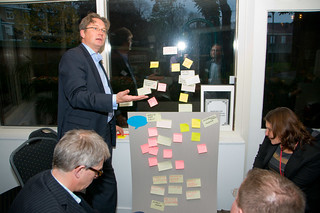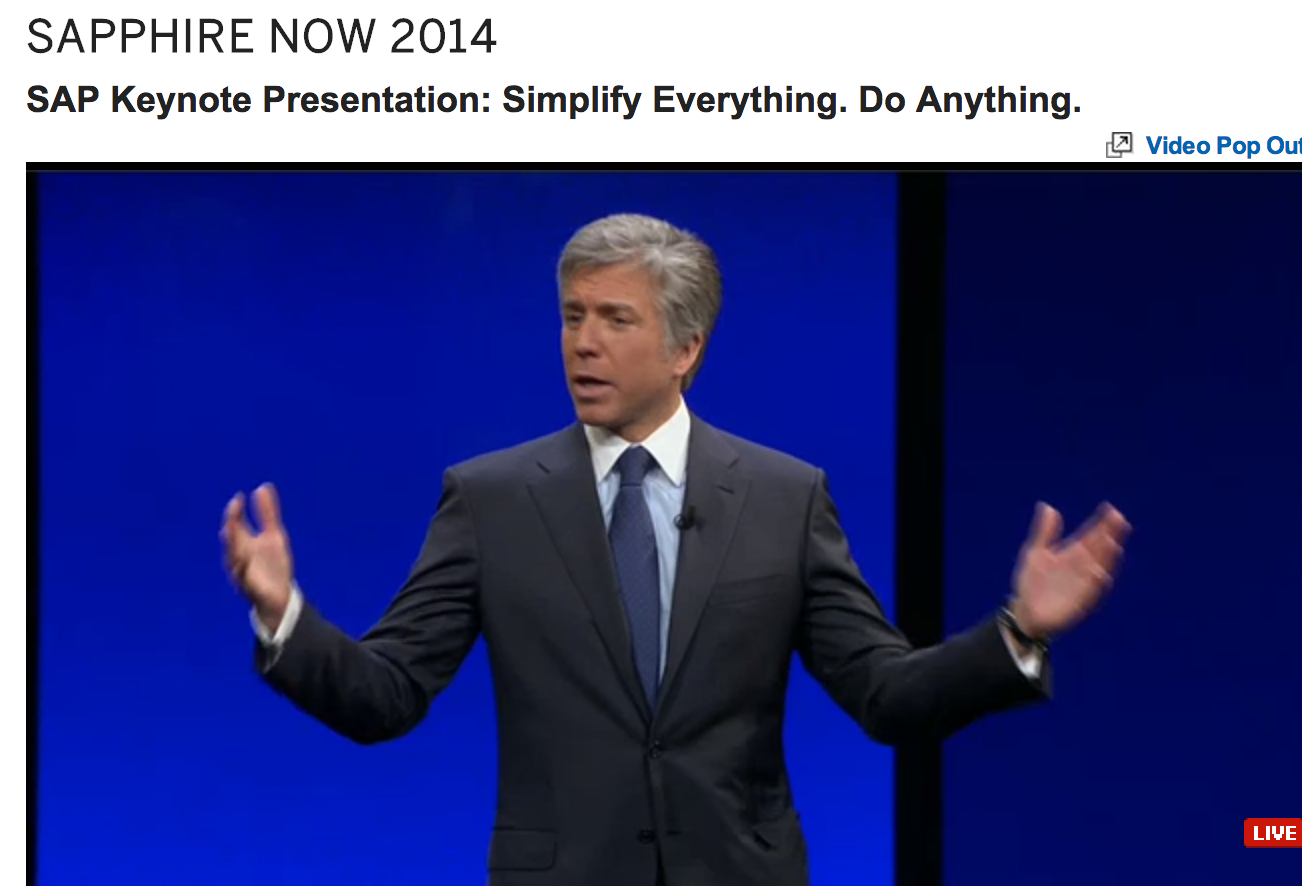User Centered Design & Delivery / mini workshop
At the Ciber Knowledge Carousel Louis van de Wiele and I had the opportunity to explain User Centered Design & Delivery to our attendees. We decided to focus on the design part and conducted a mini Design Thinking workshop. To participate actively in a workshop is a better experience than just sit back and hear what the presenters have to say. But with only 45 minutes for our session we had to push time boxing to the extreme ;-)
Our challenge was to “Redesign the event experience”, how to improve the event experience for an attendee. (Hah, quite an interesting case, if I may say so, attendees of our event were able to suggest improvements that we can use for our event next year ;-)
After an explanation of the challenge we kicked of with the first step.

A short interview, 2 minutes sharp, to gather personal experiences on attending events.
Then up to the next phase.

Share the interview results within the group. Combine statements that are similar and find relations. To facilitate we asked to create a problem statement, but do so you need a persona. In order not to loose time, we shared “Julia, a business process analyst at a high tech manufacturer”.
The problem statement was:

Gather as much as possible ideas for your problem statement, in only 5 minutes. How can you help Julia? This phase is about quantity, not about quality yet. Be creative, act as a child, think in opportunities in stead of problems.
What ingredients are required for the ideal event? Think about the agenda, speakers, location, …
5 minutes for this step.

As we had 4 parallel teams working on the same challenge, we needed a step to come together. To share the results of the groups with all the participants. As time ran out, we asked one group to present their idea in 3 minutes.
With each team presentation all participants hear about each others prototypes. And after that voting starts again. What was the best prototype? What was the best approach? Is it an idea of one group, or maybe, is it a combination of the results from several groups?
Prevent that your solutions are not accepted or used in the end, as that is a complete waste.
In our short workshop attendees experienced co-creation, co-innovation and built on top of each others ideas. We saw how the energy flew throughout the teams and how combining insights and ideas lead to a better solution direction, a great event experience.
Our challenge was to “Redesign the event experience”, how to improve the event experience for an attendee. (Hah, quite an interesting case, if I may say so, attendees of our event were able to suggest improvements that we can use for our event next year ;-)
After an explanation of the challenge we kicked of with the first step.
1. Context

A short interview, 2 minutes sharp, to gather personal experiences on attending events.
- When was the last time you visited an event
- What did you like
- What didn’t you like
- Why did you attend
Then up to the next phase.
2. Analysis

Share the interview results within the group. Combine statements that are similar and find relations. To facilitate we asked to create a problem statement, but do so you need a persona. In order not to loose time, we shared “Julia, a business process analyst at a high tech manufacturer”.
The problem statement was:
Julia, a business process analyst, needs a way to … (position user’s needs) … because … (insight) …And only 4 minutes for this step ;-)
3. Workshop

Gather as much as possible ideas for your problem statement, in only 5 minutes. How can you help Julia? This phase is about quantity, not about quality yet. Be creative, act as a child, think in opportunities in stead of problems.
What ingredients are required for the ideal event? Think about the agenda, speakers, location, …
4. Prototype
Now it’s time to pick the best idea, vote on the ideas to see what the group thinks is the best idea. And work on that one. Create a prototype to visualize your idea. In our workshop the prototype resembled the ideal event that Julia really needed to attend.5 minutes for this step.
5. Presentation

As we had 4 parallel teams working on the same challenge, we needed a step to come together. To share the results of the groups with all the participants. As time ran out, we asked one group to present their idea in 3 minutes.
With each team presentation all participants hear about each others prototypes. And after that voting starts again. What was the best prototype? What was the best approach? Is it an idea of one group, or maybe, is it a combination of the results from several groups?
User Centered Design // Happy Users!
User Centered Design is to understand the real user, his or her background and to come up with a prototype as soon as possible. A prototype can be validated in an early stage and with the feedback you can create a new prototype. And then when it is accepted by the end users, you step into User Centered Delivery. Realize the actual solution, application and make the users happy!Prevent that your solutions are not accepted or used in the end, as that is a complete waste.
Final words
It is interesting to see that people, sometimes even unknown to each other, step into the workshop and form a team in no time, when you facilitate them through the process. A process where in step 1 you diverge (gather background information), in step 2 you converge (define persona and problem statement) and again in step 3 you diverge (come up with as many ideas as possible) to finalize in step 4 to converge again (create your prototype).In our short workshop attendees experienced co-creation, co-innovation and built on top of each others ideas. We saw how the energy flew throughout the teams and how combining insights and ideas lead to a better solution direction, a great event experience.


Comments